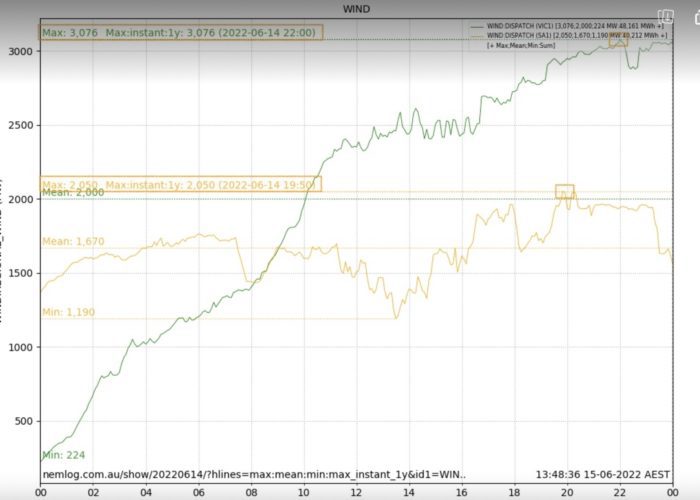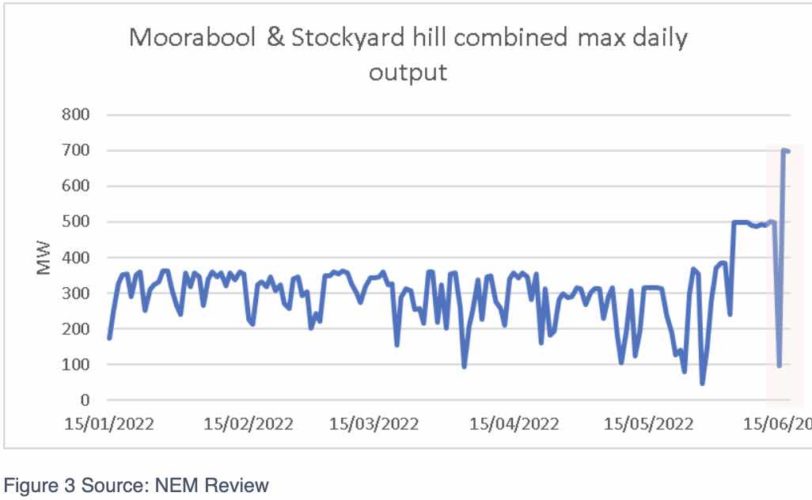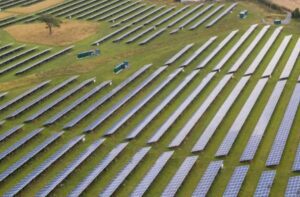Amid the chaos in the country’s electricity markets, two new wind output records in Victoria and South Australia were set this week, and appear to have coincided with a sudden boost in capacity at two of the country’s biggest and most delayed wind projects.
According to Geoff Eldridge, from NEMLog, maximum instantaneous output records were smashed on Tuesday night in both states.
In South Australia, the output breached 2GW for the first time and reached 2,050MW at 1950 AEST, beating the previous record set earlier this month of 1934.7MW.
A few hours later, presumably as the cold front swept across the country, Victoria set a new maximum instantaneous output record of 3076MW at 2200 AEST. It was the first time that state has broken the 3GW mark, and easily beat the previous record of 2,970MW set earlier this month.

But it may not have been only strong winds helping to set the record.
The South Australia record was likely helped by a strong contribution from the country’s biggest hybrid wind, solar and battery project, the Port Augusta Renewable Energy Hub, the first wind stage of which has now joined the grid and which was adding more than 100MW at the time the record was set.
Market watchers also noted a sudden lift in output this week from two of the country’s most heavily delayed projects – the Stockyard Hill facility, which should be the biggest wind farm in the country but which has been held well below its full 530MW capacity, and Moorabool, which has a nominal capacity of 312MW.
On Tuesday, Stockyard Hill’s output leaped to 500MW for the first time, presumably as it moved beyond another “hold point” that had restricted its output until then.
Around the same time, Moorabool, which had been capped at 70MW, leaped to around 200MW, also likely to be due to a lift in its “hold point.” What fortuitous timing that both increases in capacity came as the state grappled with the crisis that has put supply at risk as gas generators pulled capacity due to the price cap.
The sudden boosts in wind output had a dampening effect on prices, because it wrestled control of market price setting away from the expensive gas generators. Price in both Victoria and South Australia remained negative for most of the night as the wind blew strong.
Likewise, the only relief that the coal-dependent markets of Queensland and NSW have had in the past week is when solar – large scale and rooftop – has produced enough to also wrestle pricing control over the gas generators.
Seems like more renewables might be the answer to the fossil fuel pricing catastrophe. Who knew!









